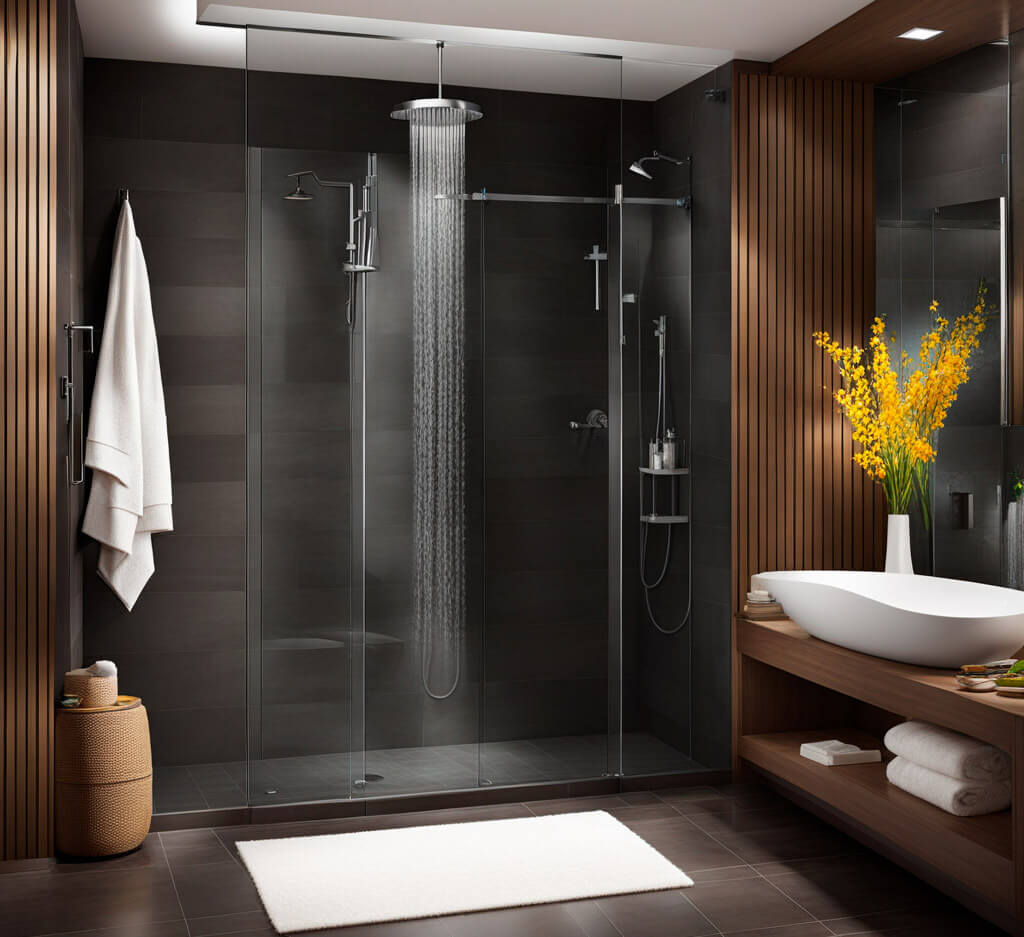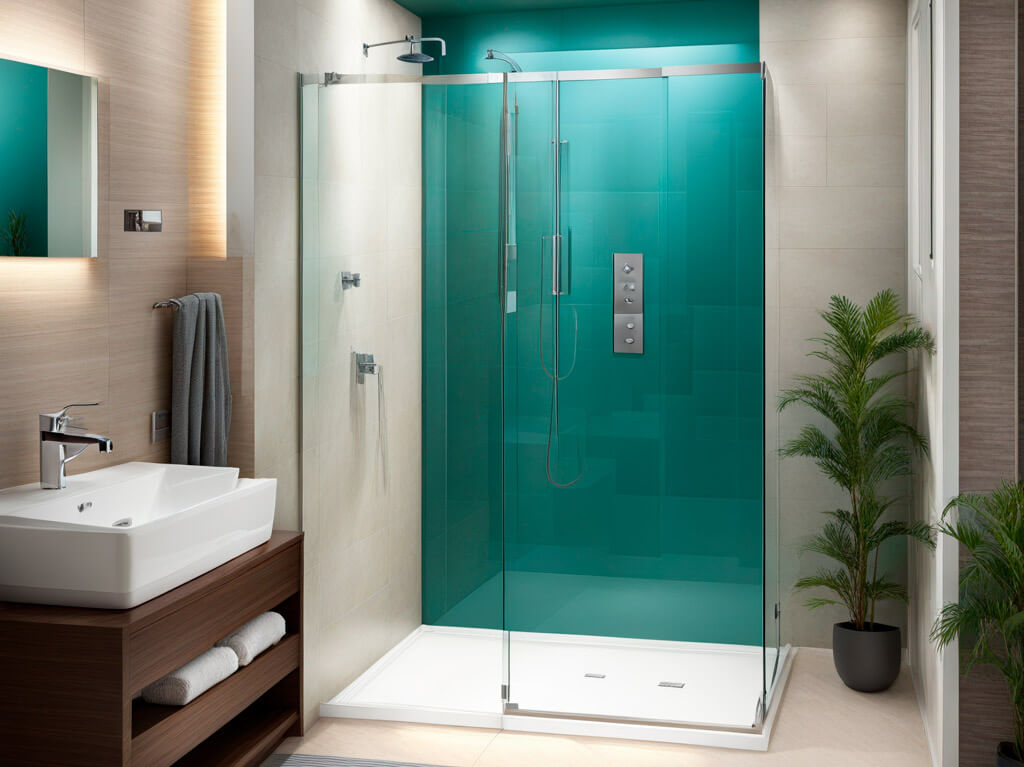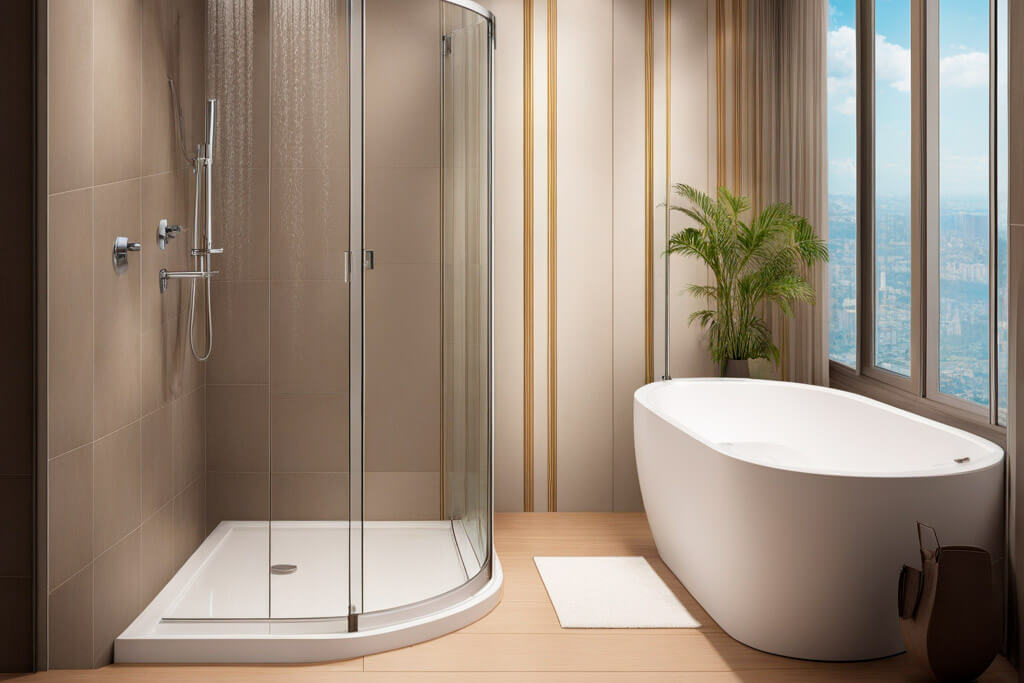When it comes to home repairs, replacing a shower valve cartridge is more than just a routine task, it’s an essential skill for maintaining the heart of your shower’s functionality. This task is not just about fixing a part, it’s about ensuring the comfort and reliability of your daily routine. The beauty of DIY repairs like this lies not only in the cost savings but also in the deep satisfaction of personally enhancing your home’s efficiency.
For all you DIY enthusiasts, home handymen, and construction professionals, this guide is tailored to empower you with the skills and knowledge needed to tackle this task confidently, regardless of your experience level.

Understanding Your Shower Valve
Identifying the type of shower valve you have is the cornerstone of a successful replacement. There are primarily two types you’ll encounter: mixer valves and thermostatic valves. Mixer valves are the traditional sort, controlling hot and cold water flow separately to achieve the desired temperature. Thermostatic valves, on the other hand, automatically adjust the water temperature, providing a consistent shower experience.
Determining the type of valve in your shower is crucial for selecting the appropriate replacement cartridge. A visual inspection usually does the trick. Mixer valves typically have separate hot and cold controls, whereas thermostatic valves might feature a single control for temperature regulation. Recognizing this distinction is pivotal for ensuring you select the correct cartridge for your shower’s specific needs.
Tools and Materials Needed
Equipping yourself with the right tools and materials is half the battle won. Here’s a concise list of what you’ll need:
- Wrenches: A set of adjustable wrenches is indispensable for this task.
- Screwdrivers: Both Phillips and flathead, essential for various screws you’ll encounter.
- New Shower Valve Cartridge: The main component. Ensure it’s compatible with your valve type.
- Plumber’s Tape: A must-have for preventing leaks.
- Rags and Bucket: Prepare for potential water spillage.
- Flashlight: Essential for better visibility in tight spaces.

When selecting the right cartridge, think of it as finding a part for a classic car – it needs to be just the right fit for your specific model. If in doubt, the old cartridge can be your guide, bring it along when shopping for a replacement.
A handy tip: Before dismantling anything, take a photo of your current shower valve setup. This can serve as a valuable reference during reassembly, ensuring everything goes back in its right place.
Next, we’ll dive into the step-by-step process, meticulously breaking down each phase of the replacement. With careful attention to detail, you’ll be equipped to handle this task with the finesse of an experienced pro.
Preparation Steps
Before we embark on the journey of replacing a shower valve cartridge, it’s essential to set the stage for a safe and efficient workspace. Think of this as laying the groundwork for a successful project.
Safety Precautions
The first and foremost step is to shut off the water supply. This is a critical move to avoid any unexpected indoor showers. Locate the main water valve, usually found in the basement or on an exterior wall, and turn it off. A pro tip: Leave a note on the valve to inform others that you’re working on the plumbing.
Clearing the Work Area
Your work area should be clean and clear. Remove any items from the shower area, including toiletries and bath mats. This not only provides you with ample space to maneuver but also protects your belongings from water splashes or tool damage. Lay down some old towels or rags to absorb any residual water – a simple step that goes a long way in keeping things tidy.
Tool Organization
Organizing your tools beforehand can significantly streamline the process. Gather all necessary tools – wrenches, screwdrivers, plumber’s tape – and place them within easy reach. A well-organized tool layout not only saves time but also prevents any mid-job hunting for the right tool, which can be both frustrating and time-consuming.
Step-by-Step Guide: Replacing the Shower Valve Cartridge
1. Removing the Shower Handle
The variety of shower handles – knobs, levers, or others – typically conceal a fixing screw beneath a decorative cap. Gently pry off the cap and unscrew. When removing the handle, be gentle yet firm. It’s often the small, patient movements that are most effective.
2. Accessing the Shower Valve
The faceplate or trim is your gateway to the valve. Remove it with care, as it often reveals much about the condition and type of valve you’re dealing with. Approach this step like an archaeologist – cautiously and with curiosity.
3. Removing the Old Cartridge
Confronting the old cartridge may require a mix of finesse and gentle force. If it resists, apply a penetrating oil and allow it to work its magic. Remember, patience here is more effective than brute strength. A steady hand and a calm approach are your best tools.
4. Installing the New Cartridge
Introducing the new cartridge should be a smooth process. Align it properly and ensure it sits well. Tighten it to a point that’s firm but not overbearing. Over-tightening can lead to damage, so find that sweet spot where it’s secure but not strained.
Troubleshooting Common Issues
Dealing with a Stuck Cartridge
In cases where the cartridge seems immovable, take a step back and assess. Sometimes, a change in technique or a different tool can provide the solution. The key is not to rush or force it excessively.
Ensuring No Leaks Post-Installation
After installation, the true test is when the water is turned back on. Watch for any signs of leakage. If there’s a drip, a slight tightening might be needed. It’s often a delicate balance to ensure everything is snug and leak-free.
Adjusting for Water Temperature and Pressure
Finally, check the water temperature and pressure. Adjustments might be necessary to ensure the shower operates at its optimal level. Small tweaks to the cartridge can often rectify any minor issues.

Finishing Up
As we near the end of this task, it’s crucial to ensure everything is reassembled and functioning as it should. This is where your attention to detail really pays off.
Reassembling the Handle and Trim
Carefully align the handle back onto its stem. It should fit smoothly without any force. Secure it with the screw you previously removed, but be cautious not to over-tighten, as this can damage the handle. Next, reattach the trim or faceplate. Ensure it sits evenly against the wall, creating a tidy, finished look.
Testing the Shower for Proper Function
With the handle and trim back in place, it’s time to test your work. Slowly turn the water supply back on and observe. Watch for any signs of leaks around the handle and valve. Turn the handle to test the water flow and temperature control. It should operate smoothly, with a consistent and even water flow. Any anomalies in flow or temperature control may indicate that further adjustments are needed.
Cleanup and Tool Maintenance Tips
After a job well done, cleaning up is just as important. Wipe down any water spills, collect your tools, and ensure the work area is left tidy. Proper tool maintenance ensures longevity and readiness for your next project. Clean them off, dry them, and store them properly. A well-maintained toolset is a dependable ally in any home renovation task.
FAQ Section
Key indicators include a persistent drip or leak from the showerhead, difficulty in adjusting water temperature, or a handle that is hard to move. These symptoms often point to a worn-out cartridge that needs replacing.
Shower cartridges are specific to the make and model of your shower valve. It’s essential to match the replacement to your exact valve model to ensure proper fit and function. A mismatched cartridge can lead to poor performance or further damage.
First, recheck your installation for any misalignments or loose connections. Ensure the cartridge is properly seated and all components are tightened adequately. If the leak persists, the issue may lie elsewhere in the valve or plumbing, necessitating further investigation or professional assistance.
The lifespan of a shower valve cartridge varies depending on usage and water quality. Generally, it’s advisable to replace the cartridge every 3-5 years. However, in areas with hard water or high usage, more frequent replacements may be necessary to maintain optimal performance.
Yes, turning off the main water supply is a critical step. This precaution prevents water from flowing into the work area, reducing the risk of water damage and making the replacement process safer and more manageable.
